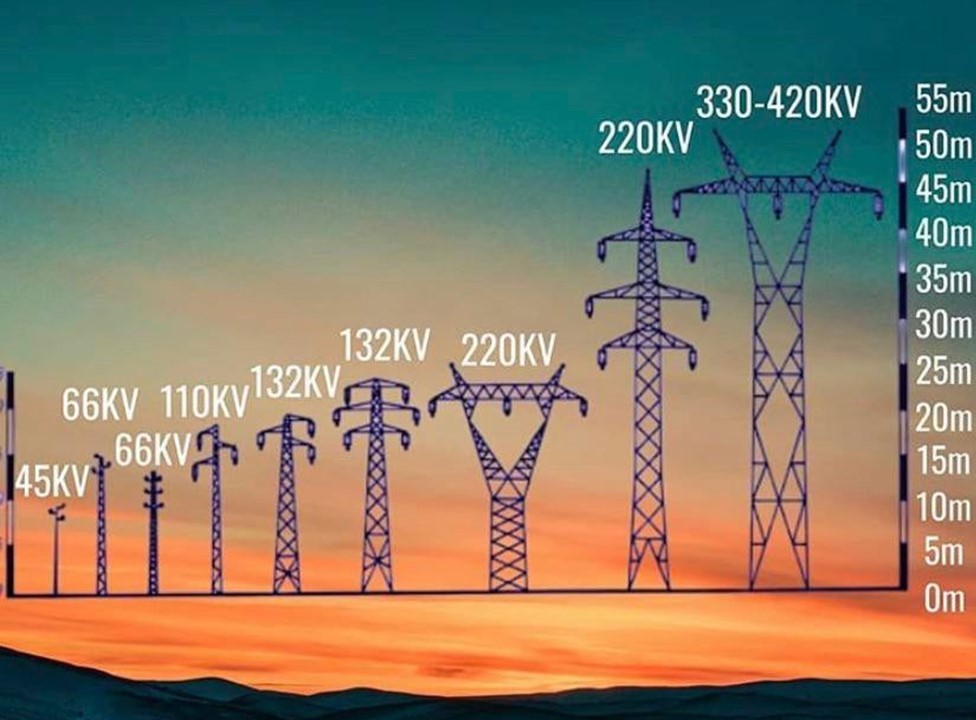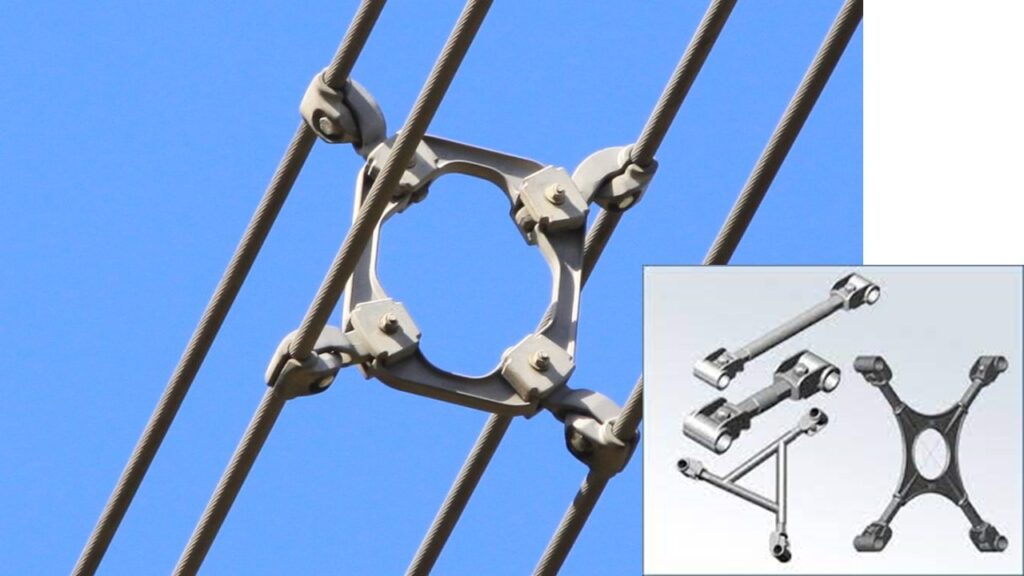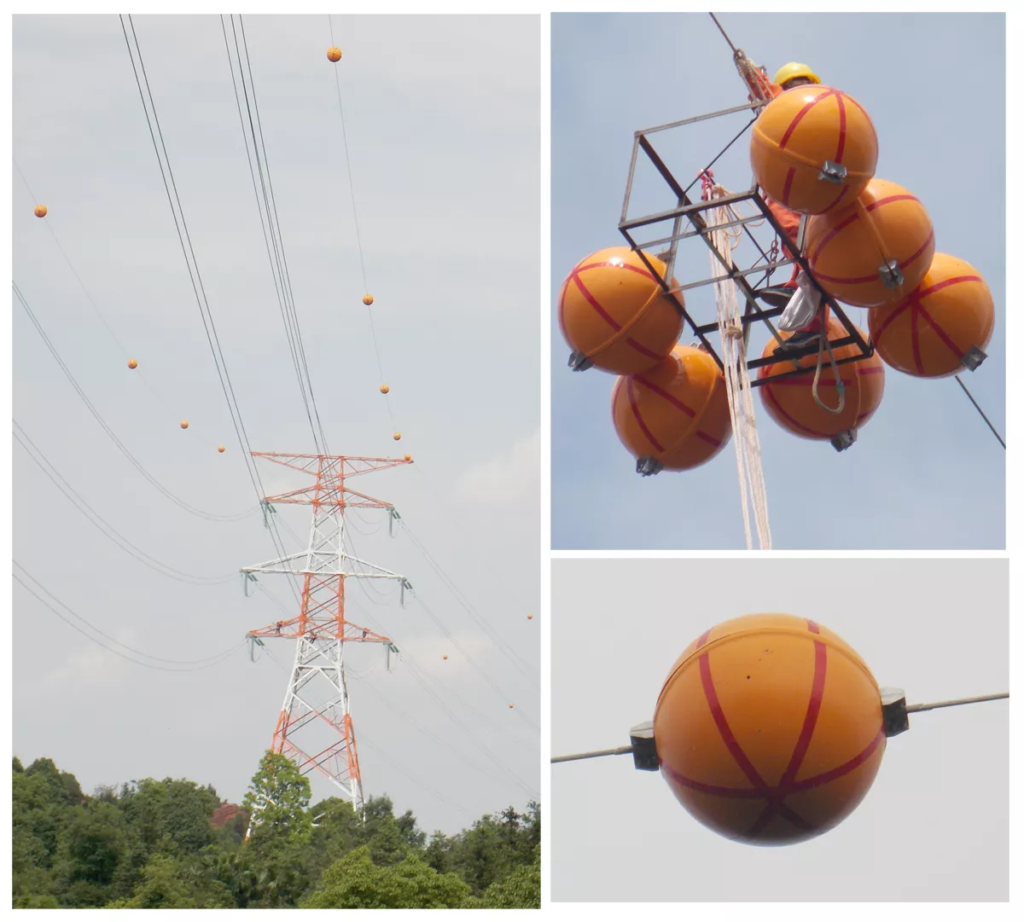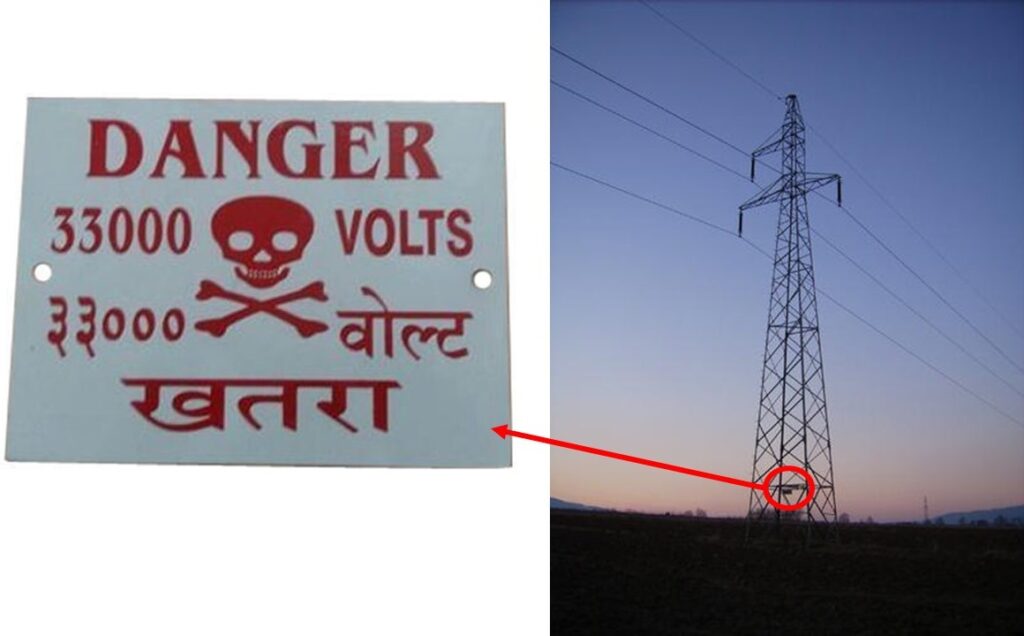Activity: 1.2
Name of the Activity:
Collect the information on components of transmission line.
Introduction: Electrical transmission lines are responsible for bulk transportation of electricity from generating plant to substation nearby the load centre. Various components of transmission lines play their role for the successful transmission of power. A brief overview of 13 components used in transmission lines is given below.
1. Phase Conductor: A conductor is the main component which carries current from source end to load end. A single circuit pole contains three conductors (Since major portion of our power system is three phases, one conductor per phase is used). Some poles are designed to carry two circuits, such poles contain six line conductors. The conductor voltage may be 11 kV, 33 kV, 66 kV, 132 kV, 220 kV, 400 kV, 765 kV etc. Mainly AAC (All Aluminium Conductor), AAAC (All Aluminium Aloy Conductor), ACSR (Aluminum Conductor Steel Reinforced) conductor is used in transmission line.

2. Bundled Conductor: A bundled conductor reduces the reactance of the electric transmission line. It also reduces voltage gradient, corona loss, radio interference, surge impedance of the transmission lines. By making bundle conductor, the geometric mean radius (GMR) of the conductor increased.
3. Transmission Tower: Transmission tower is the main structure which carries conductors and keeps them away from the ground. Due to economic reasons, the conductors used in transmission lines are kept bare. According to the level of voltage, the height of the tower is selected. Height for a 220 kV line will be more than the height of a 33 kV line.

4. Insulator: The transmission line insulator is made of porcelain. Its major objective is to insulate conductor from pole as well as to support it. The insulator is directly connected to cross an arm of the pole. There are different kinds of insulators are used in transmission, e.g. strain insulator, disc insulator, etc. Mainly a string of insulator is used in transmission line.

5. Crossarm: Cross arms are used to support insulators. The figure indicates insulators connected to a double circuit transmission line.

6. Optical Fiber Ground Wire (OPGW): Besides phase conductor there is another cable that is connected at the top of pole. The primary purpose of the OPGW is to provide protection against lighting strokes as an earth continuity cable and sencondly to communicate with another substations & SLDC (State Load Dispatch Centre) just as same as optical fibre works.

7. Vibration Damper: As the name indicates the vibration dampers are installed on transmission lines to control vibrations of overhead lines. A vibration damper has two bell-shaped metallic weights fastened to end of the metallic rod.

8. Jumper Wire: It connect the conductors beween the insulator strings.

9. Spacer: For low voltage transmission of electricity, one conductor per phase is used. However, for high voltage transmission, multiple conductors or bundled conductors per phase are employed. In such a case the spacer is used so as to keep the conductors apart from each other.

10. Power Line Marker: Power line markers are used to make transmission lines visible to pilots, drone operators and other machinery operating in area. Very often orange colored balls are used on transmission lines for this purpose.

11. Danger Plate: Danger plates indicate the voltage level of transmission lines as well as it serves the purpose to warn users for not touching the lines.

12. Anti-climbing fence: Anti-climbing fence is used to restrict users from climbing the transmission line poles. They are installed near the base of transmission lines and their sole purpose is to provide safety to the general public.

13. Corona Ring : The purpose of the corona ring is to distribute the electric field gradient and lower its maximum values below the corona threshold, preventing corona discharge. Corona rings are used on very high voltage power transmission insulators and switchgear, and on scientific research apparatus that generates high voltages.

Remarks: Some components of the transmission line are observed successfully.
